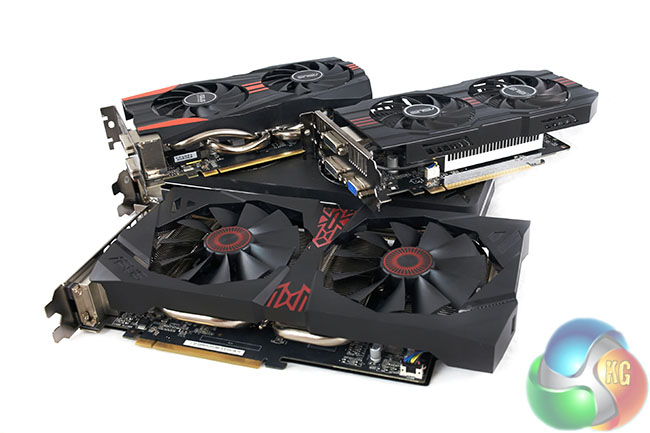AMD's R9 280 series has proven popular with the enthusiast audience – particularly as the hardware has been able to outperform Nvidia solutions at a similar price point.
When the company contacted me discussing the new R9 285 I admit I was scratching my head – especially after reading the technical data. Was it really a wise decision releasing another graphics card with such similar specifications to the R9 280? 1,792 Stream Processors? Check. 112 Texture units? Check. 32 ROP's? Check.
On a performance level there is little to distinguish the R9 285 from the older R9 280. AMD may have reduced the memory interface from 384 bit to 256 bit but thanks to the new lossless delta colour compression algorithms the 256 bit product manages to perform very well.
AMD have also improved geometry performance. Their 4xPrim rate has improved tessellation throughput against the older R9 280 hardware. They have also enhanced the work distribution between geometry front end units and vertex re-use for better performance with many small triangles.
We discuss this in more detail earlier in the review, but in real world terms the R9 285 can keep up with the R9 280 and in some scenarios actually outperform it.
The Asus R9 285 STRIX is probably as good a R9 285 solution as you are likely to get in the coming months. The custom cooler is fantastic, and we love the fact that below a specific temperature both fans will deactivate to completely eliminate noise. The STRIX was fairly responsive to manual overclocking, and ran cool under extended load situations. Its a well built, quiet solution featuring a solid 8 phase power implementation. There is a lot more to discuss however and most of it falls outside ASUS control.
Many enthusiast gamers will be annoyed that AMD have decided to reduce the memory count between R9 280 and R9 285 from 3GB to 2GB, however we have been told by the company that 4GB versions of the R9 285 featuring Hynix and Elpida memory will be available at a later date. We would hope that prices won't rise much – I do have some cost concerns already which I detail in the closing paragraphs.
The new R9 285 brings some welcome additions to the fore. Like the R9 290 series of cards, the R9 285 gets bridgeless Crossfire support – removing the need for ugly looking bridge cables between multiple GPU's in a Crossfire configuration. The R9 285 has the latest programmable audio pipeline. This TrueAudio technology is designed for game audio artists and engineers, so they can ‘bring their artistic vision beyond sound production into the realm of sound processing’. The new Unifed Video Decoder provides a full fixed function decode engine with support for H.264, VC-1, MPEG4, MPEG2 and MJPEG. It also adds support for high frame rate 4k H.264 content.
On a pure manufacturing level, the drop to 2GB of GDDR5 memory and the new tighter 256 bit memory interface will undoubtedly reduce production costs for AMD, enhancing their profit margins. They could argue that the new enhanced 256 bit memory interface means that the enthusiast will not suffer – but their primary reason for the move is to reduce their own manufacturing costs. All companies will enhance their architecture over time, so I wouldn't consider it particularly unusual.

In their press literature AMD are keen to point out just how much faster the R9 285 is when directly compared against Nvidia's GTX760. AMD didn't send us their reference card today which brings with it both good and bad points.
On a positive note, I didn't have to endure hideous noise levels from one of their reference coolers again, but equally so, I had to ensure that I didn't compare an overclocked ASUS R9 285 STRIX against a reference clocked GTX760. We opted to test against the Asus GTX760 Direct CU II OC 2GB card, available for £179.00 inc vat via Amazon. It would be fair to say that the overclocked GTX760 was markedly outperformed by the R9 285 today.
While the performance comparisons against GTX760 are clear cut AMD face their biggest challenges from their own products. AMD informed us that prices for the R9 285 will start at £169.99 in the United Kingdom. The ASUS R9 285 STRIX will ship with a premium – costing around the £199.99 inc vat mark. Today we have seen prices of overclocked, custom cooled 3GB R9 280's from the likes of VTX3D at only £149.99 inc vat.
Undoubtedly AMD will start phasing out the older R9 280, but another problem exists for the R9 285 … in the shape of the R9 280X. You can pick up custom cooled, overclocked R9 280X cards today for £199.99 inc vat. Yes, the same price as the Asus R9 285 STRIX and probably a handful of other custom R9 285 solutions when they hit retail in the coming weeks. The R9 280X is not only clearly a higher performance solution, but it does ship with an extra 1GB of GDDR5 memory which may help it with some texture intensive titles when cranking the image quality settings at 1600p.
So, in closing, there is no doubt the R9 285 may be seen as a sideways step for AMD in many ways. We do feel its a very capable card but AMD need to get the pricing sorted out. You can either pick up a custom cooled, overclocked R9 280 for considerably less money, or an enhanced R9 280X for the same price as the Asus R9 285 STRIX. The XFX R9 280X used in this review today is available from Amazon for £199.73 inc vat.
Over the coming months we would hope to see R9 285 prices start to drop because if AMD partners are releasing 4GB versions of this card they will end up extremely expensive, especially if we base the pricing on what we are seeing today for the 2GB versions.
Subsequent R9 285 reviews will feature analysis on power consumption of the products – we simply ran out of time hitting launch time for today's review.
Discuss on Facebook, over HERE.
Pros:
- excellent performance.
- outperforms GTX760.
- STRIX cooler is brilliant.
- quiet.
- bridgeless crossfire.
- programmable audio pipeline.
- Unified Video Decoder.
Cons:
- R9 285 pricing needs adjusted if AMD want to be competitive against their own products.
Kitguru says: The ASUS R9 285 STRIX is a fantastic solution, offering great gaming performance. But R9 285 pricing is all wrong in the UK – wait until prices drop.

 KitGuru KitGuru.net – Tech News | Hardware News | Hardware Reviews | IOS | Mobile | Gaming | Graphics Cards
KitGuru KitGuru.net – Tech News | Hardware News | Hardware Reviews | IOS | Mobile | Gaming | Graphics Cards



I just dont understand the purpose of this card.
Its no more efficient than previous GCN cards.
Atleast Nvidia is releasing a much better architecture with 750 Ti and 960/970/980.
I was expecting a bit better from AMD,i thought the 285 wil be faster than the 280x. Guess i’ll wait a bit and see Nvidia’s offering to replace my 7850.
To use up the chips which weren’t good enough to be sold as 290s and push TrueAudio support.
Where’s the power consumption test? It should, in theory, be less power hungry.
I don’t expect them to do it. Nvidia’s CEO speaks about higher prices in the future and articles about AMD not considering changing their GPU prices where posted a few days ago. Also AMD has done this before. They replaced better performing cards – 7730, 7750 and 7770 – with slower cards – 240, 250 – at the same price points. They are doing it now again. Lower specs, higher price.
Go ahead and replace your 7850 I had two in CFX and replaced it with this card and you know what I don’t regret it one bit
This card even though very very good on 1080p gaming just can’t cut the mustard with 4K gaming which is where AMD pitched this card maybe if it had 4GB of Vram then it would be a much better contender
damn you Nvidia fans boys come out in droves…. It isnt meant for 4k gaming … And if you want big green go with big green… damn…